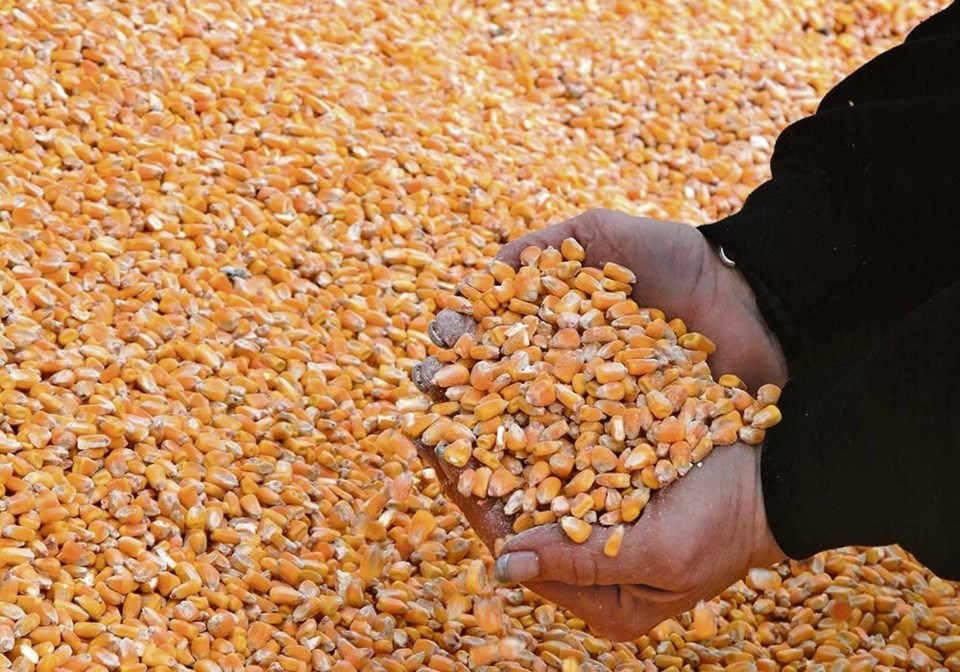WESTERN PRODUCER — Corn growers in the United States are not relinquishing their crown just yet.
Brazil is taking over as the world’s top corn exporter in 2022-23, for only the second time in history.
The previous year was 2012-13 when there was a severe drought in the U.S.
Brazil’s exports in 2022-23 are estimated at 56 million tonnes, far eclipsing U.S. exports of 41.9 million tonnes.
Krista Swanson, lead economist with the U.S. National Corn Growers Association, said the switch has been caused by a perfect storm of events.
Brazil harvested a record crop of 133 million tonnes of corn in a year when U.S. production was slashed 10 percent by drought, she said during a news conference hosted by the NCGA and the U.S. Grains Council.
As well, Cary Sifferath, vice-president of the U.S. Grains Council, said record low water levels on the river system, resulted in high barge freight rates, and that led to high corn prices out of New Orleans.
The strength of the U.S. dollar compared to the Brazilian real didn’t help matters for U.S. exporters.
“It really took a hit against us in our key shipment periods,” said Sifferath.
Many analysts believe that 2022-23 marks the start of a changing of the guard in the corn market, which will have ripple effects for all feed grains.
But Swanson said that is premature.
Brazil’s cropland increased 2.5 times between 2000 and 2021.
Eighty percent of the growth during the 2000 to 2014 period was because of repurposing pastureland, with the rest coming from conversion of natural land.
Farmers can still boost cropland by converting pastures, but Brazil’s new president has said he will protect environmentally sensitive rainforest, which will limit expansion in that area.
Brazil’s average corn yields are less than half of the U.S. average because three-quarters of the country’s corn is produced as a second crop following soybeans.
Swanson said it has nothing to do with the type of corn being grown because 95 percent of Brazil’s crop is genetically modified, just like in the U.S.
It also has nothing to do with the lack of fertilizer. In 2020, Brazilian farmers used 112 percent more fertilizer per hectare than U.S. growers.
“It’s not surprising because they need some extra fertilizer to grow two crops in a year over a lot of their acres,” she said.
The upshot is that U.S. corn production is more sustainable because farmers in that country are producing way more corn using far less fertilizer.
There is also a growing grain storage deficit in Brazil, which means farmers are sometimes forced to sell their stored corn or soybeans at inopportune times to make room for the next harvest.
Brazilian farmers also have to contend with serious logistical problems. Sixty percent of the country’s grain is transported to port by truck.
But Brazil has one-quarter of the roads that the U.S. has and only 12.4 percent of them are paved. Earlier this year, heavy rainfall caused a mudslide on a highway leading to one of Brazil’s main ports, resulting in limited access to the port.
Swanson said Brazil’s corn was priced about US$0.75 per bushel less than U.S. corn in May and June, which helped boost sales of the product.
At the same time, it reduced returns to Brazilian farmers compared to their American counterparts.
All these challenges in Brazil may affect how farmers in that country think about growing a second crop of corn, she said. That is why she doesn’t think it is a slam dunk that Brazil will overtake the U.S. as the world’s top supplier of the product.
“As we look ahead, the U.S. and Brazil are likely to maintain competitive levels of exports in the world market,” she said.
That is certainly what the USDA forecasts for 2023-24. It estimates Brazil will export 55 million tonnes of corn, slightly edging the U.S. program of 53.34 million tonnes.
The USDA noted in a recent report that Brazil is making inroads in one key U.S. market.
China bought 21 million tonnes of corn in 2021-22. Almost all of that came from the U.S. and Ukraine, with the U.S. capturing 70 percent of those sales.
But Brazil’s exports to China surged in late-2022 after China agreed to allow imports from the South American country.
China has imported 2.2 million tonnes of Brazilian corn in 2022-23, largely at the expense of U.S. farmers.
Prices for U.S. corn to be delivered in the June-November period averaged US$330 per tonne in China, more than $30 higher than Brazilian corn.
“China’s move reflects a larger pattern among other large Asia buyers — such as South Korea, Japan, and Vietnam — to diversify sources of corn imports,” said the USDA.
Contact [email protected]

